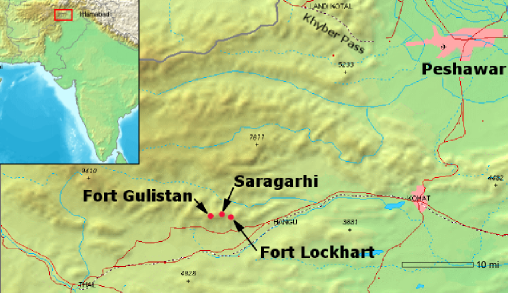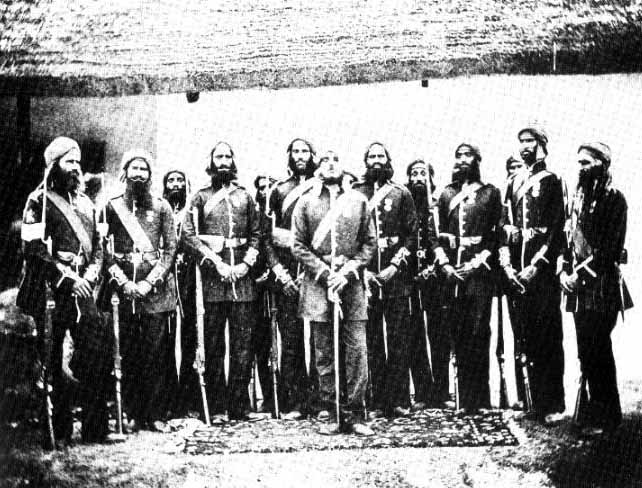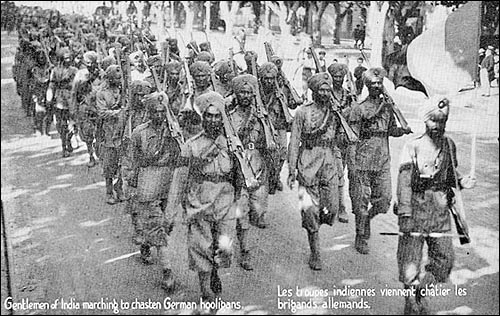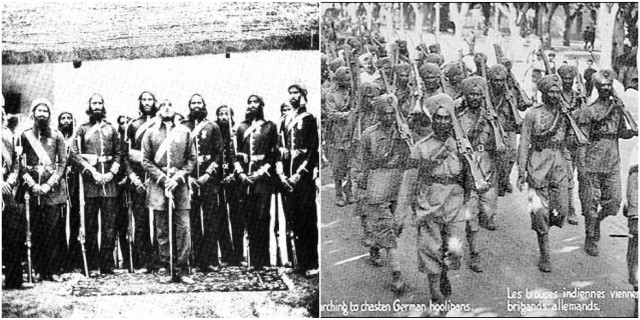“It is no exaggeration to record that the armies which possess the valiant Sikhs cannot face defeat in war.”
Queen Victoria, British Parliament, 1897.
On September 12, 1897, in the Tirah region of the North-West Frontier Province, now in Pakistan, 10,000 Pashtuns attacked the city of Saragarhi, beginning at about 9 a.m.
There were only 21 Sikh soldiers of the 36th Sikh regiment remaining at Saragarhi and they had two choices – to retreat or to face 10,000 Pashtuns. What’s surprising is that the Sikhs, led by Havildar Ishar Singh, decided to go into battle against overwhelming odds.
Saragarhi was a post that connected British India forts of Lockhart and Gulistan on the border area of Afghanistan. Maharaja Ranjit Singh, the great Sikh Emperor, had constructed a series of outposts along the Hindu Kush ranges. But, after the decline of the Sikh empire, these posts were taken over by the British Army.
The region had always been a troubled area, and during the last quarter of the 19th century, British India’s hold on the North West Frontier was tenuous.

On the morning of September 12, 1897, Commander Havildar Ishar Singh was positioned on the watch tower of Saragarhi post. When he peered through his binoculars, he saw a huge army of approaching Afghans.
He immediately sent signals to the commanding officer Lt. Col. Haughton, who was stationed at Fort Lockhart, using his heliograph. The signal meant that the enemy was approaching the main gate and that the post needed reinforcement.
The Sikhs stationed at the post were heavily outnumbered and Lt. Col. Haughton made an attempt to prepare his troops and send them to the Saragarhi post but there wasn’t enough time to do that. The army of 10,000 Pashtuns was already too close. The signal that was sent back meant that the 21 Sikh men had to hold position.

Havildar Ishar Singh immediately called his men to consult with them whether to hold position or abandon the post. The decision that they made was to face the army of 10,000. They just signaled “Understood” to Lt. Col. Haughton.
They started organizing themselves immediately after they sent the signal to Haughton. After a short period, they were ready to face the enormous army that was headed towards them.
They formed two lines abreast, one row in a squatting firing position, and the other standing. They waited for Havildar Ishar Singh’s order to open fire. He gave the order when the enemy was at 250 meters from his post, and the Sikh soldiers opened fire.

The enemy attacked the post from all directions, but the brave Sikhs kept holding their post. After three hours of fighting, twelve Sikh soldiers were killed and only ten of them were still standing. Havildar Ishar Singh was still alive and he led his men despite the fact that he was seriously injured.
They were running out of ammunition and now they were less than 10. After a while, they were almost totally out of bullets. Only five Sikh soldiers were alive now; one of them was Sepoy Gurumukh Singh, who was atop the signaling tower, transmitting live messages to Fort Lockhart.
Finally, the enemy breached the post and killed four of the brave soldiers and the only man that was alive was Sepoy Gurumukh Singh. Before he fell he managed to kill around 20 enemy soldiers. He was the youngest among all the Sikh soldiers.
The soldiers defended their post long enough to for the relief column to arrive with artillery support. If they decided to abandon the post, the enemy would have easily captured the two forts.
The 21 Sikh soldiers managed to kill around 600 enemy soldiers in 7 hours and they were posthumously awarded the Indian Order of Merit Class III, the highest bravery award given to Indians at that time.
